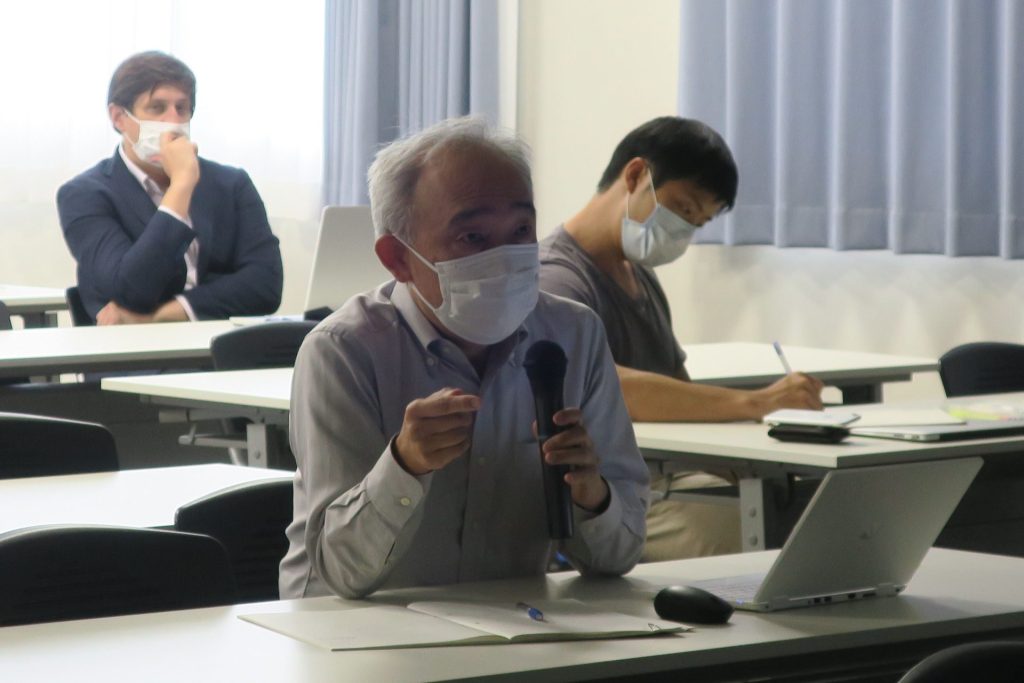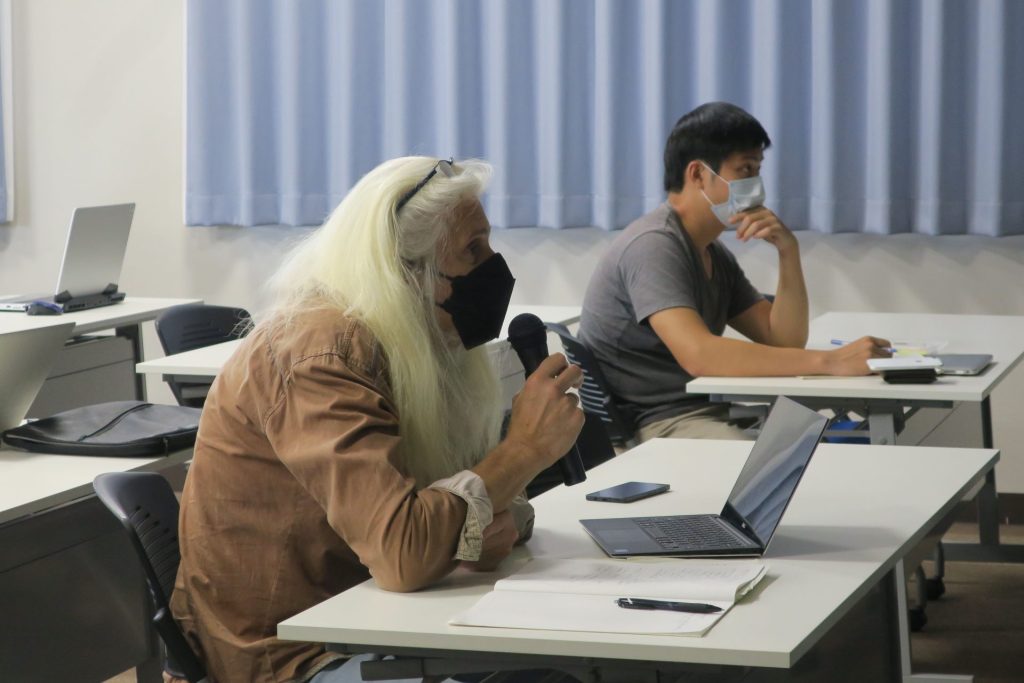August 29, 2022 We held the 3rd IER Seminar in-person and online Zoom participants. <Dr. CHABOCHE, Project Associate Professor TAKATA, Professor KANEKO>
Date & Time
Mon. August 29, 2022, 2:00 p.m. – 4:00 p.m.
Speaker (In order of presentation)
Dr. CHABOCHE Pierre-Alexis (JSPS Postdoctoral Fellowships for Research in Japan)
Project Associate Professor, TAKATA Hyoe
Professor of Faculty of Food and Agricultural Sciences, KANEKO Nobuhiro
Presentation Title
Refining fallout radionuclide baseline data to reconstruct soil redistribution rates in agricultural catchments of South America Quantifying the riverine sources of sediment and radiocesium in the Pacific Ocean (Fukushima Pref.) (CHABOCHE)
Distinct distribution of radio-Cs in river-sea system (TAKATA)
Mycoextraction of radio-cesium and rehabilitation of Satoyama (KANEKO)
Institute of Environmental Radioactivity (IER) regularly holds the IER seminar in which the faculty members report on their research results, with the aim of facilitating their research activities and promoting communication.
The 3rd IER Seminar in this fiscal year was held on August 29, and presentations were given by Dr. CHABOCHE, a FU international visiting scholar from France (JSPS Postdoctoral Fellowships for Research in Japan), Dr. TAKATA (Project Associate Professor), and Dr. KANEKO (Professor of Faculty of Food and Agricultural Sciences). The seminar was attended by 29 researchers and graduate students, including online attendees.
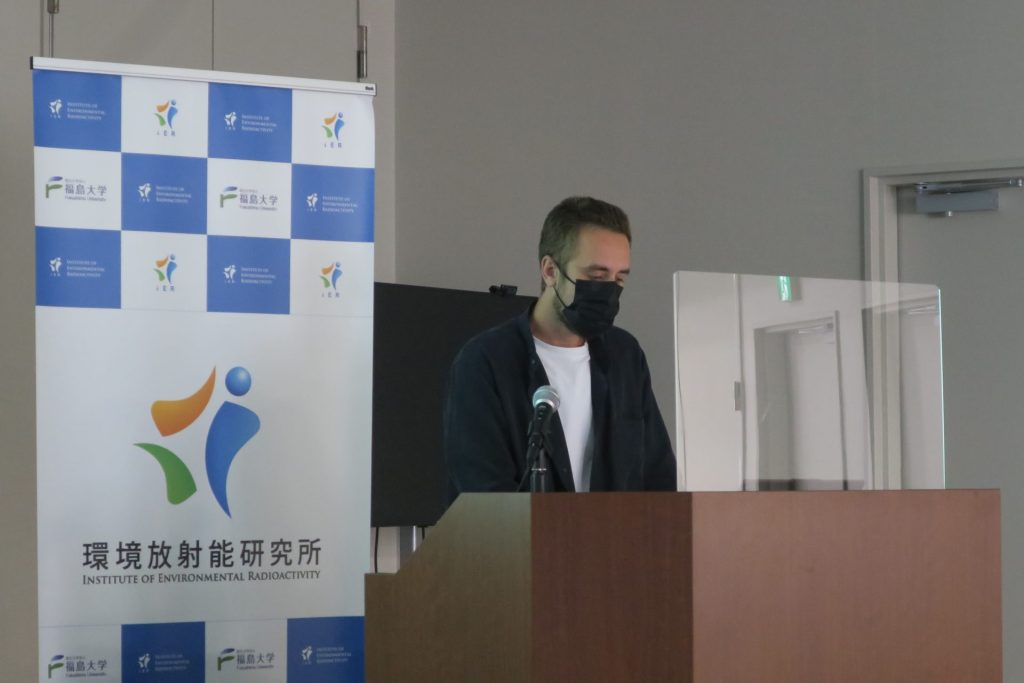
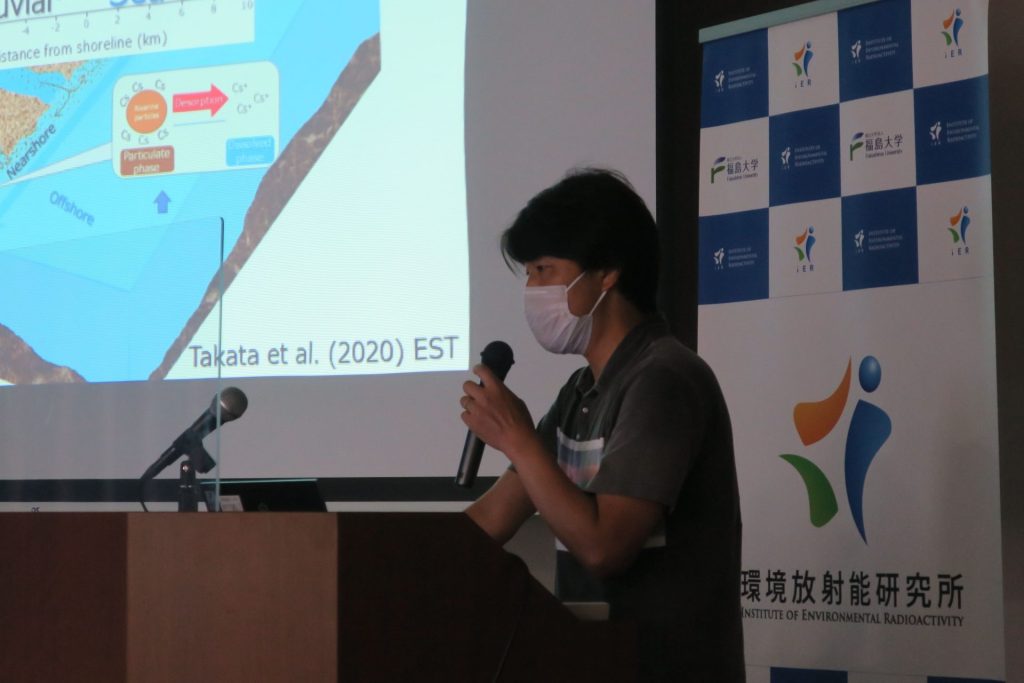
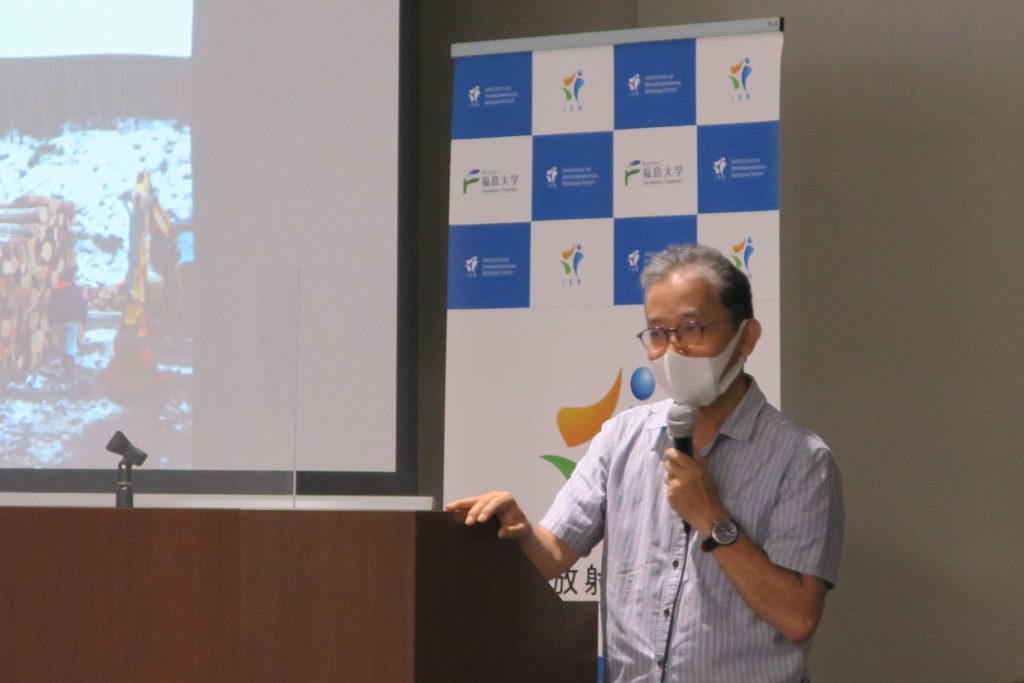
Dr. Chaboche presented the research he conducted during his PhD in France on the use of artificial radionuclides (137Cs and plutonium isotopes) to reconstruct soil redistribution rates in intensive agricultural catchments of South America. He explained the methodology used to create the first map of bomb-derived 137Cs fallout in soils of continental South America, which can be used as a powerful reference dataset to anticipate the order of magnitude of 137Cs inventories in undisturbed soil profiles of the continent, and for numerous other applications in Earth Sciences. In addition, he presented the research he conducted on refining the chronology of radionuclide fallout in the continent by using plutonium isotopes (239Pu, 240Pu), a powerful marker to date environmental archives and conduct climatic and environmental reconstructions. Finally, he introduced the research he has been conducting at the IER since in arrival on Japan regarding the quantification of sources of river sediments and associated radiocaesium in the Pacific Ocean, along the coast of the Fukushima Prefecture.
Project Associate Professor TAKATA explained that the results of measuring rCs concentrations in water collected from Tomioka River and Tomioka Port showed that there was almost no difference between river water and seawater in the dissolved state, but in the suspended particles, seawater was about 1/3 of river water, indicating the sorption behavior change, and seawater was 1/4 of river water in Kd values, indicating some desorption behavior. As a result of the sequential extraction of rCs by fractions (ion-exchangeable, organically bounded, and refractory), the iron-exchangeable fraction had lower values than expected for river water so it is necessary to continue clarifying the relationship between adsorption behavior and river velocity, characteristics of suspended particles, and other factors.
Professor Kaneko specializes in soil ecology in the Faculty of Food and Agricultural Sciences. In the seminar, he presented an efficient decontamination method for forest soils. He explained that a litter-bag study (litter leaves are placed in mesh bags and placed on the forest floor, where they are decomposed by microorganisms) on radioactive contamination in the soil food web of a forest ecosystem showed that radiocesium was adsorbed on litter leaves more than expected, and that when wood chips made from forest trees are laid on the ground, fungi grow on the chips and transfer radiocesium from the soil to the chips.
After the presentation, various questions and opinions were exchanged among participants.
